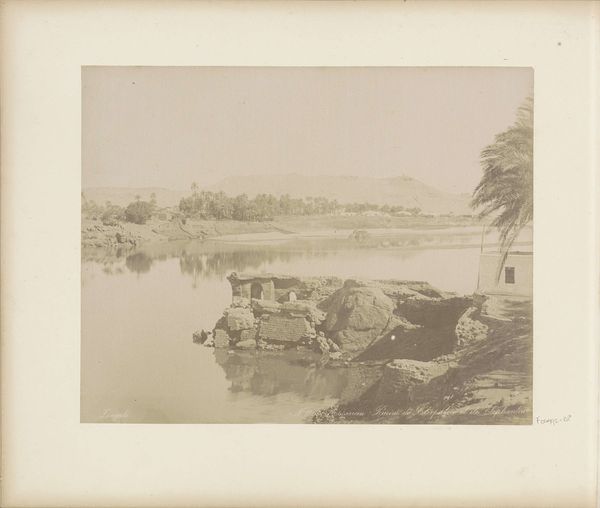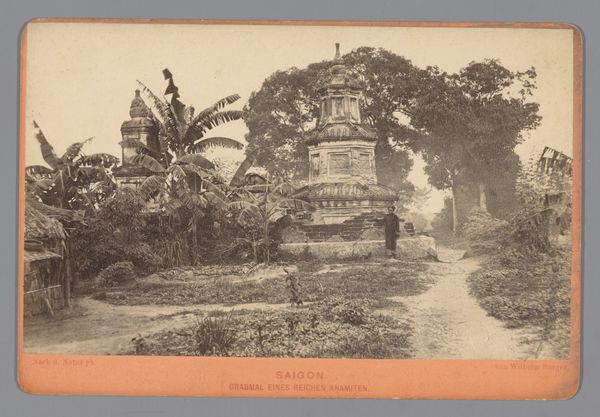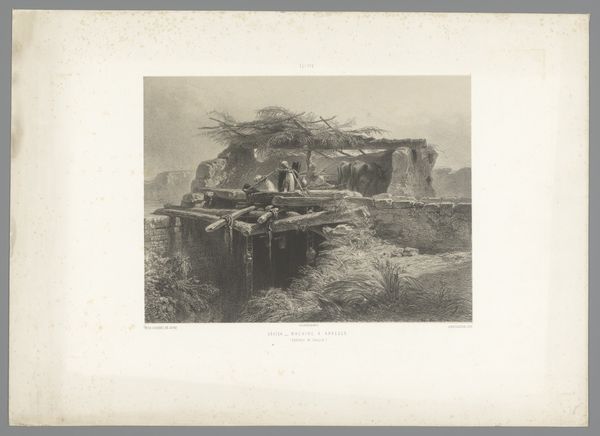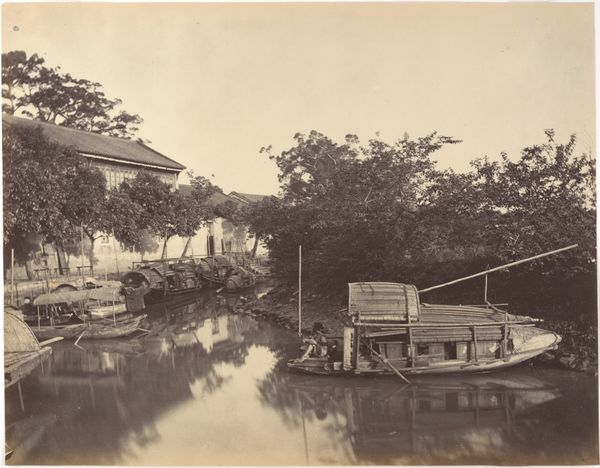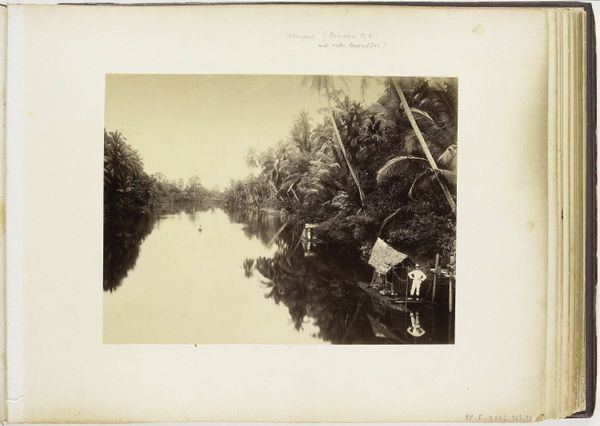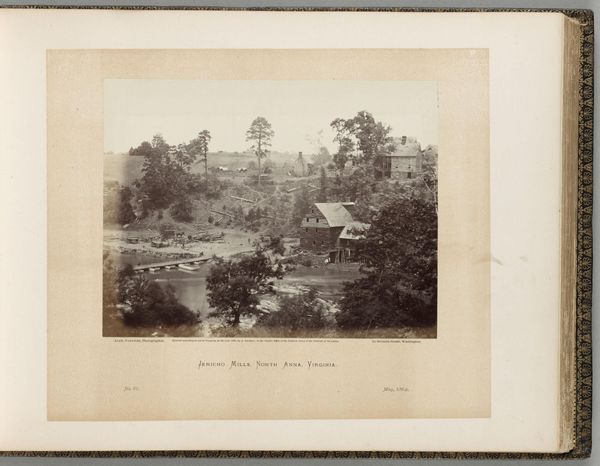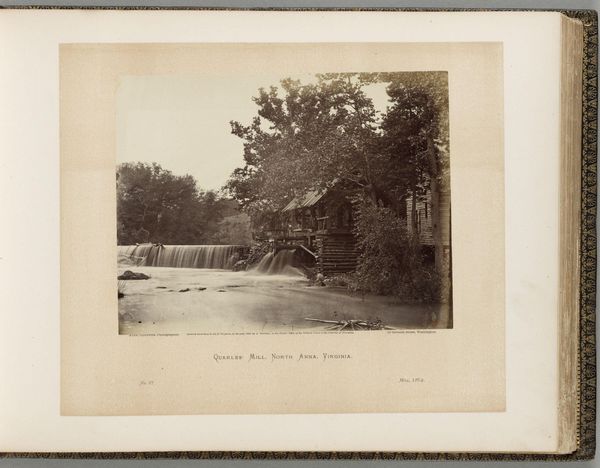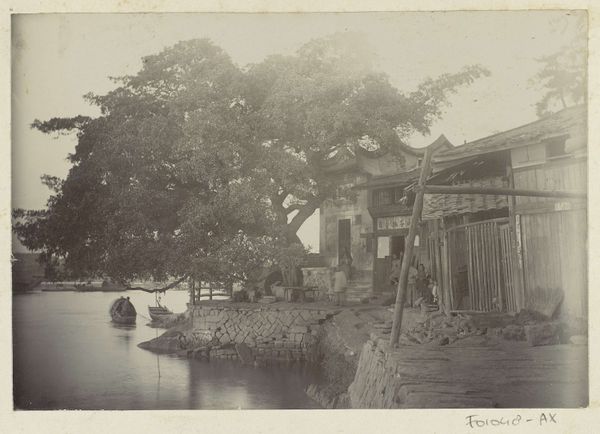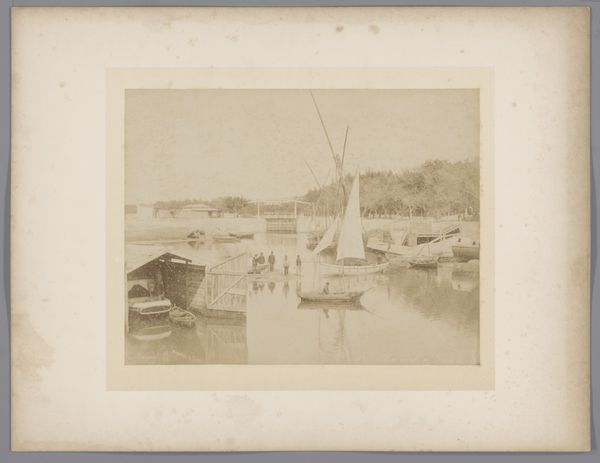![The Ruins of the Puglas/Pulai Bridge [?], India [?] by Johnston & Hoffmann](/_next/image?url=https%3A%2F%2Fd2w8kbdekdi1gv.cloudfront.net%2FeyJidWNrZXQiOiAiYXJ0ZXJhLWltYWdlcy1idWNrZXQiLCAia2V5IjogImFydHdvcmtzLzYwNTVlNWYwLTU3YjQtNDQ4NS04ZTk2LTA2MzFlMmI1ODc2OC82MDU1ZTVmMC01N2I0LTQ0ODUtOGU5Ni0wNjMxZTJiNTg3NjhfZnVsbC5qcGciLCAiZWRpdHMiOiB7InJlc2l6ZSI6IHsid2lkdGgiOiAxOTIwLCAiaGVpZ2h0IjogMTkyMCwgImZpdCI6ICJpbnNpZGUifX19&w=3840&q=75)
photography, gelatin-silver-print
#
landscape
#
photography
#
orientalism
#
gelatin-silver-print
#
realism
Dimensions: height 176 mm, width 268 mm, height 346 mm, width 435 mm
Copyright: Rijks Museum: Open Domain
Curator: Standing before us, we have a gelatin silver print from between 1875 and 1900 attributed to Johnston & Hoffmann, entitled “The Ruins of the Puglas/Pulai Bridge, India.” Editor: What strikes me is the quiet melancholy. The scene is still, the ruins softened by time, like a forgotten dream fading into the riverbank. Curator: Precisely, and I think that’s part of its enduring appeal. Consider how the photographic composition places the decaying architecture alongside the mundane—a simple boat, some felled bamboo—it merges grand aspirations with quotidian realities. The river’s placid surface almost mutes the scene as well, reflecting both sky and structure in blurred strokes. Editor: You nailed it—blurred strokes. This isn't just a record; it’s an elegy. It reminds me that all things, even mighty empires symbolized by these architectures, eventually succumb to decay. See how the square form stands out against the vegetal growth behind it. The photograph shows the intersection of time passing, contrasting natural growth with formal man-made shapes. Curator: It's also interesting how Johnston & Hoffmann employ techniques characteristic of Orientalism. They're capturing a distant, 'exotic' landscape, transforming the site into something almost mythical for a Western audience. But I agree it doesn't feel exploitative. There's a sincere attempt to engage with the sublime. Editor: And there's something in the symmetry too, don't you think? Like that fallen log that mirrors in the ground that trunk behind it, as though they were mirror images reflected onto one another—even in ruin, some part of it manages to carry itself. Curator: Yes, those mirror-like moments are key. Despite the 'realism' inherent in photography, there’s an evocative quality to the piece that moves beyond mere documentation. What do you make of the subdued palette and limited contrast, then? Editor: Ah! Now you're digging deep. To me, that restraint focuses us on texture and form. It forces us to look closer, past the easy exoticism and towards the underlying beauty of the place, still vibrant despite the evident decay. Curator: Indeed. The interplay of shadow and light, that slow revelation of form... I appreciate its understated elegance. It reveals more about the way cultures can reflect off of one another over a body of water than about how they might decay in conflict with nature. Editor: So well said. It leaves us suspended, almost dreamlike, pondering not just ruins, but time itself. Curator: A very thoughtful engagement with what might otherwise seem a simple historical document. I find it a really powerful piece to sit with.
Comments
No comments
Be the first to comment and join the conversation on the ultimate creative platform.
